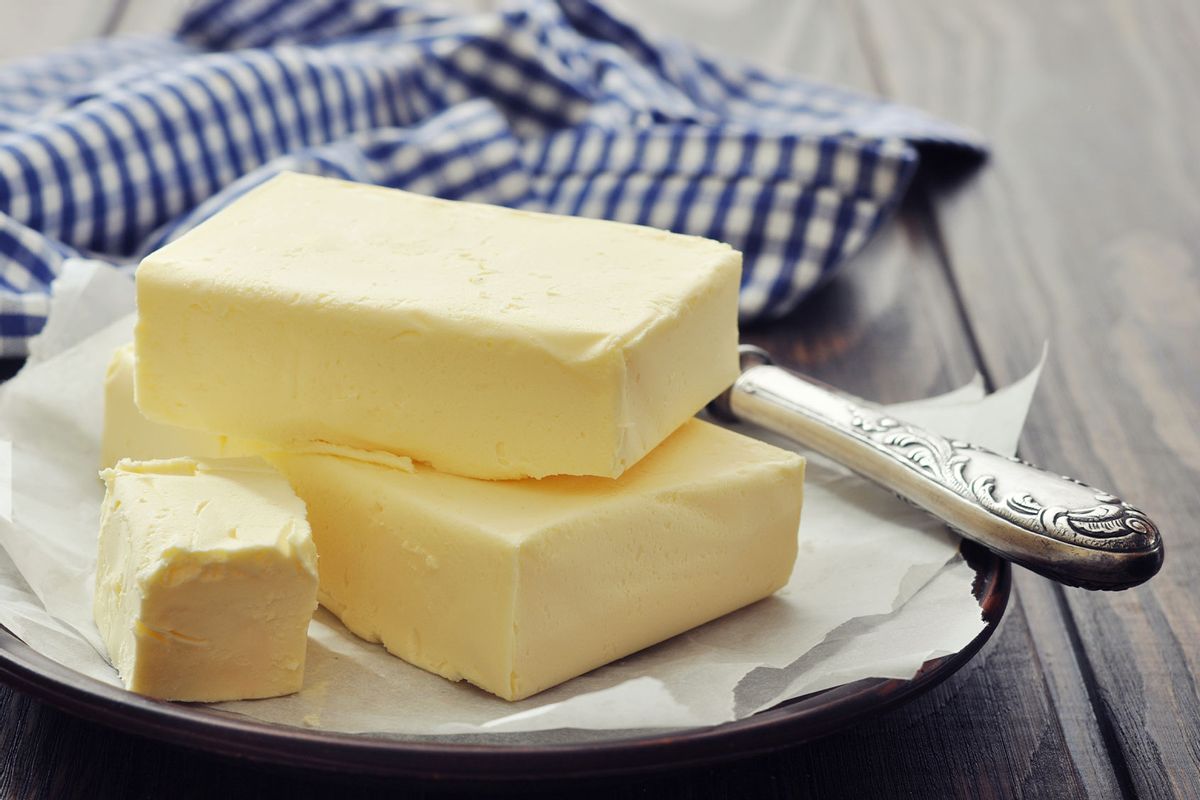Why I (almost) never buy salted butter

One of the absolute simplest pleasures in the world of food is a really well made (and seasoned) bread and butter. If I’m out to eat and the menu has an $8 specialty bread-and-butter service, I’m automatically in. Some of my most wonderful food memories center around that perfect combination.
Whether you’re out to eat and enjoying an expertly crafted roll and a compound butter pairing or you’re having a simple breakfast of plush, perfect bagels and some rich, salted butter, there’s an innate enjoyment that comes along with that, from taste to texture. It’s offers a satisfaction that not many other foods meet.
I am not alone in my adoration; a cursory Google search for “butter poetry” led me to some truly fascinating works. Butter adherents are attracted to so much: the symbolism, the history, the flavor, the comfort, the mouthfeel.
However, I am pretty clear-cut on my butter proclivities, because when you get it right, there’s nothing like it, right? That’s why — as someone who craves a little more control in the kitchen — I tend to only buy unsalted butter. There’s a customization and control that come with unsalted butter for which I have a deep appreciation.
While I will use salted butter in conjunction with breads, rolls, pancakes or waffles and bagels, I essentially only use unsalted outside of that. And in most instances, the “salted” butter I use on the aforementioned items is really just unsalted butter that I’ve seasoned myself, or in some cases, a pat of unsalted butter with a tiny sprinkling of salt on top. (Hey, I’m not always in the mood to soften the butter, put it in a bowl, season it and whip it.)
Frankly, I’m also not a big baker, so if you’re accustomed to only ever baking with salted, “don’t @ me.” Savory is always more my beat and in that domain, unsalted unquestionably reigns supreme.
Whether adding richness and body to a sauce, giving onions and garlic a perfect fat to bathe in or topping a cheesy Italian-American classic, unsalted butter is truly a multifaceted unsung hero of the kitchen.
While I know that many are committed to salted butter and some may already be copying/pasting the URL to this story to hate-send to a pal, I assure you that I’m not trying to convince or persuade you otherwise! As I always say, it’s your kitchen.
For me, though? On the scant occasions when I do want salted butter, I like the control, the customization and the specificity of making my own. By this, I mean that I take the unsalted butter I already have on hand (in copious amounts), let it soften and then whip it up with the salt of my choosing, as well as some herbs, spices and zests. Sometimes, I want a cold, smooth, fatty butter with large flakes of sea salt, while other times, I want a room temperature citrus-forward compound butter with sage and kosher salt. It really differs, but I find that a lackluster butter can really diminish the enjoyment of the bread and butter, which essentially starts your meal or gathering on a disappointing note. And who wants that?
That why, while purchasing salted butter is a breeze, I would rather know precisely how much (and what kind) of salt is in my salted butter.
I will also note that salted butter actually lasts longer than unsalted, since the salt basically acts as a preservative, so unsalted butter is also usually “fresher,” since it’s being replaced more often in-store than salted. The amount of salt (and the precise type used) differs from brand to brand.
Want more great food writing and recipes? Subscribe to Salon Food’s newsletter, The Bite.
Beyond the control discussion, though, salted butter can also adversely affect your dishes: adding salted butter to an already-seasoned sauce might take it over the “salty” mark, while including salted butter in a cookie dough might offset the sweet-salty ratio. At the same time, a flat, unseasoned butter on a really terrific slice of bread is such an “…oh” moment that can be super disappointing or even off-putting.
I find that unsalted butter (with or without salt that I’ve added myself) has a fuller, rounder flavor that has more of a “butter-y” flavor profile, as well as a subtle sweetness that resonates on the tongue. This sweetness is the perfect complement to a salty, flaky note. When it comes to something like corn on the cob, I usually do a pat or two of unsalted butter, plus a sprinkle of kosher salt and some paprika or chili powder.
It’s an interesting dichotomy, though: I hate a bland, under-salted butter moment, but an overly salty one can be downright inedible. So it is a toss-up in that regard.
There’s also another really lovely option when it comes to compound butters that’s found in crafting the perfect butter “jacket” for your Thanksgiving turkey — or your weekday roasted chicken, for that matter. I usually opt for unsalted butter, kosher salt, sage, thyme and rosemary. It is incredibly succulent, savory and makes for some truly perfectly seasoned poultry.
Clearly, I like having a perfect, malleable butter in front of me that I can tweak or modify in whatever way I deem necessary, whether that’s flavor-wise, texture-focused, seasonal or holiday-related, or anything else. At the end of the day, however, I like being in control in my kitchen — so unsalted butter is always the go-to in my arsenal.
Read more
about this topic

